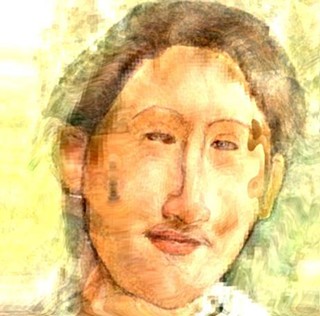This weekend, Tucson's first professional taiko ensemble, Odaiko Sonora, is hosting a taiko showcase. Performers include the local group, plus its community ensemble called Tucson Taiko Juko, as well as the groups Fushicho Daiko from Phoenix and Suzuyuki-Kai Taikoza from Tucson's traditional Japanese dance school. The special guest stars are coming from Sacramento: Taiko Dan, including Tiffany Tamaribuchi, one of America's premiere performers and instructors of taiko.
The showcase is a sure sign that taiko is taking over the life of co-organizer Karen Falkenstrom, of Odaiko Sonora.
"Taiko is not a pastime; it's a lifestyle," she says. "You have to stay in good physical condition; you have to keep your mind focused, and taiko is so team-oriented that it affects how you work with people in other situations."
The Japanese have employed drums in temples, on the battlefield and as village communication for millennia, but taiko as we know it today was essentially invented in 1951 by a Japanese jazz drummer named Daihachi Oguchi, who'd come across some traditional drum music, decided to make it more rhythmically interesting and assembled a group to play it. There's nothing remotely jazzy about the result, but the music can sometimes be so complex that the beats may be divided up among less-accomplished players.
The word "taiko" specifically describes the big, fat drum at the center of the music, but the term has come to be applied to the music in general and the groups that play it. The style caught on quickly in Japan; it's even bigger than bowling leagues used to be in America. On our own continent, taiko was taken up in the 1960s by Japanese Americans trying to develop a distinct cultural voice in the decades following the internment of their families during World War II. Once Japanese drum groups like Kodo started touring the United States in the 1970s, taiko began to attract adherents without any Japanese heritage at all.
Falkenstrom discovered taiko when Kodo performed at Centennial Hall in 1992. "I was moved beyond description," she recalls. "It was one of the most powerful human activities I'd ever seen. It had physical and spiritual aspects; it had discipline, and it had beauty both in terms of the drumming itself and the body forms of the people working together."
At the time, the only way she could have studied taiko was by commuting to Phoenix three times a week to work with Esther Vandecar's then recently formed Fushicho Daiko. That didn't suit her schedule, but 10 years later, Falkenstrom met Rome Hamner, who was studying taiko in Tucson with kendo master Stanley Morgan, who was connected to several of the early North American taiko groups in California.
Falkenstrom immediately began studying with Morgan, too, and within three months had mastered nine songs, which is quite a load. Morgan's ill health brought that project to an end, but Falkenstrom and Hamner started their own ensemble, Odaiko Sonora. They now give 30 performances a year, and have at least a dozen students of their own.
Falkenstrom and Hamner have developed a regional reputation as the two crazy women who will drive to Los Angeles and back in a single day to attend a three-hour taiko workshop. But that sort of behavior has allowed them to network with fellow taiko enthusiasts from around the nation and persuade a leading teacher like Tamaribuchi to come to Tucson for the showcase.
The instruments tend not to be stocked at the Chicago Store or Beaver's Band Box. What most American taiko musicians who aren't lucky enough to snag something on eBay do is build their own drums out of wine barrels. Falkenstrom and Hamner once drove to California's Napa Valley to fetch from a vintner friend a dozen barrels' worth of staves; during the trip back, the weight of the wood on the roof of Falkenstrom's car cracked her windshield, and the whole vehicle smelled like Burgundy.
Back home, during practice, Falkenstrom and company may joke around a bit, but they take their taiko work seriously. "Something about it requires unity and a respect of differences, but also a recognition that those differences have to work together toward something that's bigger than those differences," she says. That's why taiko can accommodate so many different kinds of practitioners; there are perhaps 200 groups in the United States right now.
At the same time, Falkenstrom acknowledges that Americans, sensitive to the fact that they come from outside Japanese culture, tend to develop a fundamentalist streak in terms of adhering to taiko traditions. "Nobody from my group comes from a milieu of Japanese culture," she says. "So we tend to be more formal, and we resist evolving the art form because we're trying to be more Japanese. It's actually the Japanese who are accepting more Western elements into the evolution of the art form."
Taiko, she says, is not really something that a loner can get into in the privacy of his or her garage. "It's a group art form, and a cultural art form," she says. "We're teaching something that has its origins in a cultural response to current events, a thing people who were being silenced seized upon to express themselves.
"And did I mention that it's fun?"








